
Friedrich Christian Anton Lang, better known as Fritz Lang, was an Austrian-born German-American film director, screenwriter, and producer who worked in Germany and later the United States. One of the best-known émigrés from Germany's school of Expressionism, he was dubbed the "Master of Darkness" by the British Film Institute. He has been cited as one of the most influential filmmakers of all time.
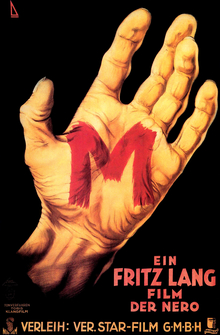
M is a 1931 German mystery thriller film directed by Fritz Lang and starring Peter Lorre in his third screen role as Hans Beckert, a serial killer who targets children. Both Lang's first sound film and an early example of a procedural drama, M centers on the manhunt for Beckert conducted by both the police and organized crime.

Ida Lupino was a British actress, director, writer, and producer. Throughout her 48-year career, she appeared in 59 films and directed eight, working primarily in the United States, where she became a citizen in 1948. She is widely regarded as the most prominent female filmmaker working in the 1950s during the Hollywood studio system. With her independent production company, she co-wrote and co-produced several social-message films and became the first woman to direct a film noir, The Hitch-Hiker, in 1953.

Raoul Walsh was an American film director, actor, founding member of the Academy of Motion Picture Arts and Sciences (AMPAS), and the brother of silent screen actor George Walsh. He was known for portraying John Wilkes Booth in the silent film The Birth of a Nation (1915) and for directing such films as the widescreen epic The Big Trail (1930) starring John Wayne in his first leading role, The Roaring Twenties starring James Cagney and Humphrey Bogart, High Sierra (1941) starring Ida Lupino and Humphrey Bogart, and White Heat (1949) starring James Cagney and Edmond O'Brien. He directed his last film in 1964. His work has been noted as influences on directors such as Rainer Werner Fassbinder, Jack Hill, and Martin Scorsese.

Rhonda Fleming was an American film and television actress and singer. She acted in more than 40 films, mostly in the 1940s and 1950s, and became renowned as one of the most glamorous actresses of her day, nicknamed the "Queen of Technicolor" because she photographed so well in that medium.

The Blue Gardenia is a 1953 American film noir starring Anne Baxter, Richard Conte, and Ann Sothern. Directed by Fritz Lang from a screenplay by Charles Hoffman, it is based on the novella The Gardenia by Vera Caspary.

Howard Green Duff was an American actor.
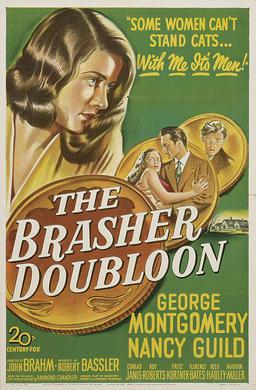
The Brasher Doubloon is a 1947 American crime film noir directed by John Brahm and starring George Montgomery and Nancy Guild. It is based on the 1942 novel The High Window by Raymond Chandler.

Sally Forrest was an American film, stage and TV actress of the 1940s and 1950s. She studied dance from a young age and shortly out of high school was signed to a contract by Metro-Goldwyn-Mayer.

Henry William George Lupino professionally Lupino Lane, was an English actor and theatre manager, and a member of the famous Lupino family, which eventually included his niece, the screenwriter/director/actress Ida Lupino. Lane started out as a child performer, known as 'Little Nipper', and went on to appear in a wide range of theatrical, music hall and film performances. Increasingly celebrated for his silent comedy short subjects, he is best known in the United Kingdom for playing Bill Snibson in the play and film Me and My Girl, which popularized the song and dance routine "The Lambeth Walk".
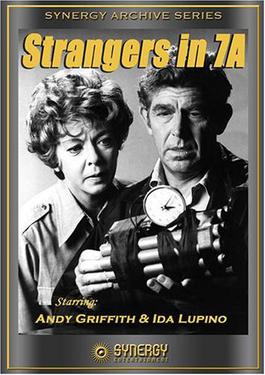
The Strangers in 7A is a 1972 American made-for-television thriller drama film directed by Paul Wendkos and starring Andy Griffith, Ida Lupino, and Michael Brandon. It is based on the 1971 novel of the same title by Fielden Farrington and originally aired on CBS on November 14, 1972.
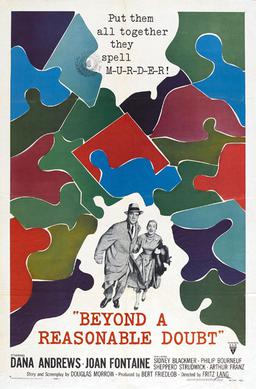
Beyond a Reasonable Doubt is a 1956 American film noir legal drama directed by Fritz Lang and written by Douglas Morrow. The film stars Dana Andrews, Joan Fontaine, Sidney Blackmer, and Arthur Franz. It was Lang's second film for producer Bert E. Friedlob, and the last American film he directed.

Cry Danger is a 1951 film noir thriller film, starring Dick Powell and Rhonda Fleming. The film was directed by Robert Parrish, a former child star and later editor in his debut as a director.
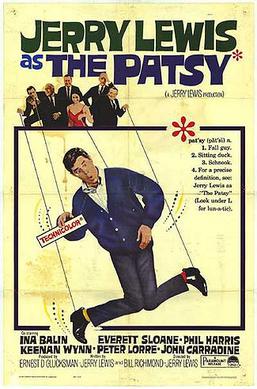
The Patsy is a 1964 American comedy film directed by and starring Jerry Lewis. It was released on August 12, 1964, by Paramount Pictures.
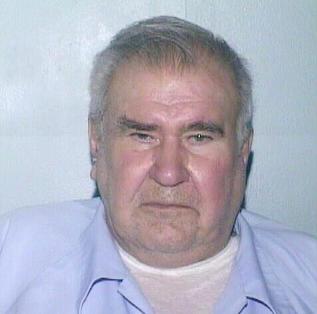
William George Heirens was an American criminal and possible serial killer who under torture confessed to three murders. He was subsequently convicted of the crimes in 1946. Heirens was called the Lipstick Killer after a notorious message scrawled in lipstick at a crime scene. At the time of his death, Heirens was reputedly Illinois' longest-serving prisoner, having spent 65 years in prison.

Jack the Giant Killer is a 1962 American heroic fantasy adventure film starring Kerwin Mathews in a fairy tale story about a young man who defends a princess against a sorcerer's giants and demons.

The Killer Is Loose is a 1956 American crime film directed by Budd Boetticher and starring Joseph Cotten, Rhonda Fleming and Wendell Corey. An independent production, it was released by United Artists. It is based on a 1953 novelette published in The Saturday Evening Post, written by John and Ward Hawkins.
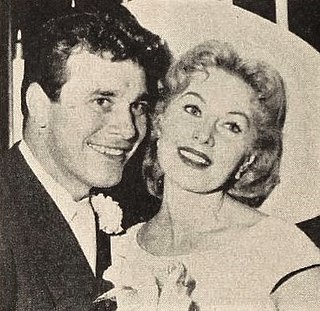
Lang Jeffries was a Canadian actor.
Charles Einstein was a newspaperman and sportswriter. He was the author of the 1953 novel The Bloody Spur, on which the film While the City Sleeps (1956), directed by Fritz Lang, was based. Einstein's father was the comedian Harry Einstein. He was the older half-brother of comedic actors Albert Brooks and Bob Einstein, better known by his stage name "Super Dave Osborne".

Little Egypt is a 1951 American Technicolor comedy drama film directed by Frederick de Cordova starring Mark Stevens and Rhonda Fleming. It is a highly fictionalised biography of the dancer Little Egypt in the 1890s.



















